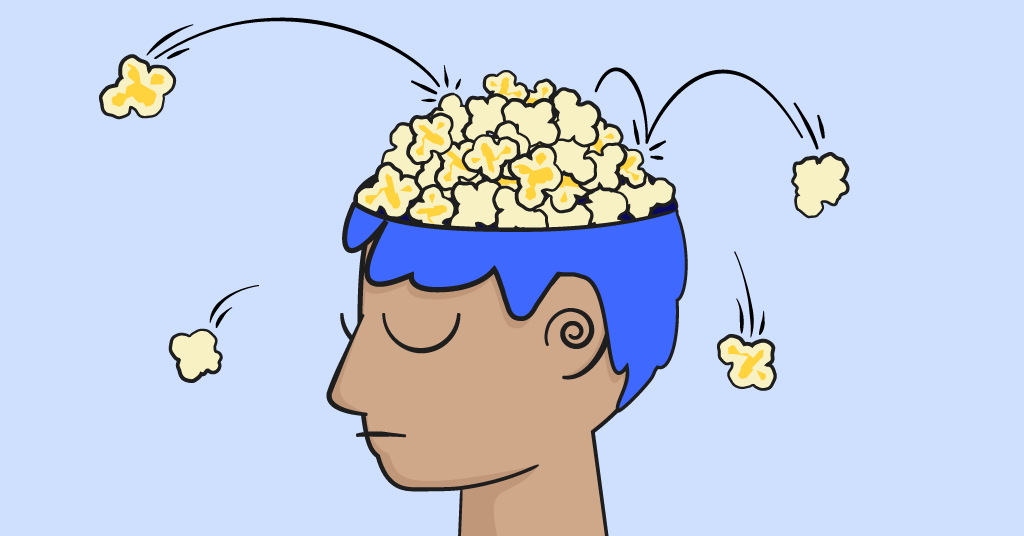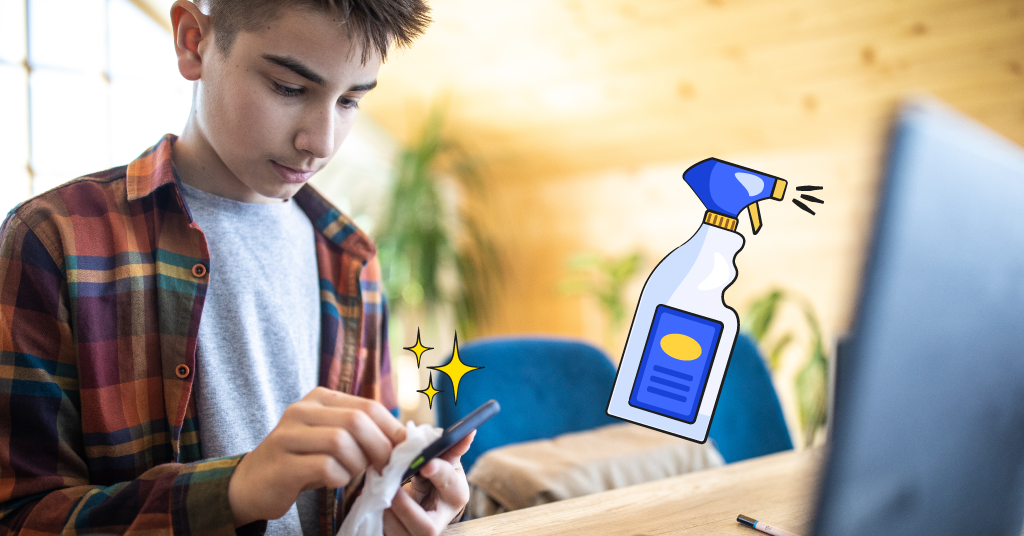3, 2, 1, ding! Content today moves at breakneck speed, and kids are keeping pace — at a cost. In the time it takes to pop a bag of popcorn (roughly three minutes), the average teen will have scrolled through more than 50 TikToks. That’s a new video every 5 seconds. As young minds engage with more short-form content — TikToks, Reels, and Shorts — their brains start rewiring to crave constant novelty, and they struggle with anything that takes sustained focus.
This shift is part of what experts call “Popcorn Brain” — the phenomenon where constant social media and short-form videos rewire attention spans, making it harder to focus. Below, we dive into the science behind popcorn brain meaning, signs your child might have it, and what parents (and Bark) can do to help.
Behind Popcorn Brain
Coined by psychologist Dr. David Levy, "Popcorn Brain" describes a state where our minds become so used to rapid-fire digital input that slower-paced, real-life experiences feel dull or frustrating.
When young brains are fed a nonstop diet of short-form videos, they’re flooded with dopamine—the feel-good chemical. Over time, this trains the brain to seek constant stimulation and reject anything that requires even the lowest amount of effort or patience.
Children and teens are still developing the executive functioning skills responsible for self-regulation, attention control and impulse management. This makes them more susceptible to the rewiring effects of overstimulation. When their brains become conditioned to expect constant novelty, sitting through a class, reading a book, or even watching a full-length movie can start to feel unbearable.
Signs Your Child Might Have Popcorn Brain
Homework feels like climbing a mountain
What used to be a simple worksheet or reading assignment now sparks frustration, procrastination, or total shutdown. Kids with rewired attention spans may start — and stop — multiple times, get distracted by tiny things or feel like the effort just isn’t worth it. Their brain is craving instant feedback, and slow-burn tasks like schoolwork just don’t deliver it fast enough.
They can’t sit still for long—or finish anything
If your child bounces between activities, fidgets during meals, and insists on having their phone in hand while eating, their brain might be wired to expect constant input. You may also notice them struggling to finish a movie, bedtime story, or even a full conversation without zoning out or grabbing for a screen.
They’re “bored” 10 seconds into everything
Kids might complain that board games are “too slow,” reading is “too long,” and even hanging out with friends is “boring.” The pace of real life can’t compete with the dopamine hits of fast-scrolling feeds, so everyday activities may start to feel unbearably dull.
When the phone goes away, the meltdown begins
You might see irritability, anxiety, or even full-blown tantrums when screen time ends. That emotional volatility is often a signal that the brain has become dependent on the stimulation and is struggling to self-regulate without it.
How Parents Can Help Kids Rewire Their Brains
Embrace the digital slowdown
Not every moment needs to be optimized or entertaining — and that’s a good thing. Help your child relearn the value of slowness by intentionally building in time for low-stimulus activities like art, nature walks, and quiet reading. One simple (but powerful) strategy? Watch a full-length movie together and then talk about it. This kind of "slow media" helps kids stretch their attention spans and think critically about what they’re consuming.
Encourage boredom
Yes, really. Boredom gets a bad rap, but it’s actually essential for building creativity, problem-solving and resilience. When kids aren’t constantly entertained, they’re more likely to explore interests or dive deeper into play. Let them sit with the discomfort — it’s where imagination starts.
Model digital balance yourself
Kids are mirrors. If you’re glued to your phone during downtime, they’ll follow suit. Try co-creating screen boundaries as a family and stick to them. You might be surprised how often “just checking one thing” turns into an hour of doom-scrolling for everyone.
Set screen time limits (that actually stick)
Try establishing tech-free zones (like bedrooms or dinner tables) and consistent screen schedules — especially before bed or during homework hours — so kids aren’t left in charge of self-regulating an algorithm designed to keep them hooked.
How Bark Can Help
If you’re feeling overwhelmed trying to manage your child’s screen time and digital habits, you’re not alone — and that’s where Bark comes in. Bark helps families navigate the digital world with tools that support healthier habits, better communication, and stronger boundaries.
From screen time scheduling and app blocking to content monitoring and real-time alerts, Bark gives you insight into what your child is experiencing online without hovering. Learn more about all of the different products Bark offers and see which one’s right for your family.
Read more
Bark helps families manage and protect their children’s digital lives.






